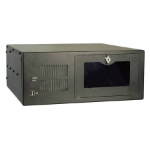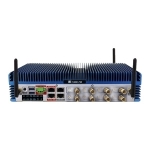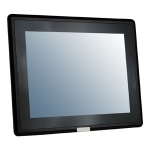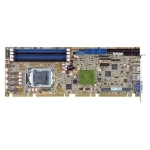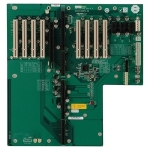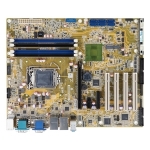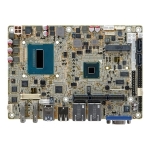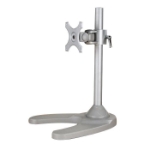In recent years, the landscape of industrial applications has evolved significantly due to advancements in technology and the increasing demand for efficiency. As industries continue to seek innovative solutions that can optimize their processes, professionals are turning towards professional view as a valuable tool to analyze and understand complex systems. In this article, we will explore various industrial application scenarios where professional view plays an essential role in enhancing productivity and decision-making capabilities.
https://www.gdcompt.com/
1. Manufacturing:
In the manufacturing industry, professionals often need to monitor real-time data from multiple sources such as sensors, machines, and workstations. Professional view allows for a holistic overview of production lines, enabling operators to identify bottlenecks, optimize processes, and improve overall efficiency. By providing an intuitive interface that displays key performance indicators (KPIs), professionals can make informed decisions on the fly, ensuring smooth operations and minimizing downtime.
2. Supply Chain Management:
Supply chain management involves coordinating various aspects of a business, including procurement, production, storage, and distribution. Professional view provides supply chain managers with real-time insights into inventory levels, order statuses, and delivery times. This allows for better decision-making when it comes to resource allocation, capacity planning, and risk mitigation. By having access to this information in a single platform, professionals can optimize their supply chains and ensure that products reach customers efficiently and cost-effectively.
3. Energy Management:
Energy management is crucial in industries such as power generation, transmission, and distribution. Professional view offers energy managers the ability to monitor and analyze data from various sources, including smart meters, sensors, and renewable energy systems. This allows for a comprehensive understanding of energy consumption patterns, enabling professionals to make informed decisions on grid optimization, demand management, and resource allocation.

4. Construction:
In construction projects, effective planning and coordination are essential for timely completion and adherence to budgets. Professional view can be utilized by project managers to monitor progress, identify potential delays or issues, and allocate resources accordingly. By providing a real-time overview of the project's status, professionals can make informed decisions that ensure smooth operations and reduce the likelihood of costly setbacks.
5. Healthcare:
In healthcare facilities, professional view offers valuable insights into patient flow, resource allocation, and staff performance. This allows for more efficient management of resources, improved patient care, and reduced wait times. By analyzing data on a real-time basis, professionals can identify bottlenecks in the system and implement changes to optimize operations.
Conclusion:
Professional view has proven itself as an indispensable tool for various industries by providing valuable insights into complex systems. As technology continues to advance, we can expect even greater integration between professional view platforms and industrial applications, leading to new levels of efficiency and productivity across a wide range of sectors. By embracing this innovative approach, professionals will be better equipped to make informed decisions that drive success in their respective industries.
https://www.gdcompt.com/
1. Manufacturing:
In the manufacturing industry, professionals often need to monitor real-time data from multiple sources such as sensors, machines, and workstations. Professional view allows for a holistic overview of production lines, enabling operators to identify bottlenecks, optimize processes, and improve overall efficiency. By providing an intuitive interface that displays key performance indicators (KPIs), professionals can make informed decisions on the fly, ensuring smooth operations and minimizing downtime.
2. Supply Chain Management:
Supply chain management involves coordinating various aspects of a business, including procurement, production, storage, and distribution. Professional view provides supply chain managers with real-time insights into inventory levels, order statuses, and delivery times. This allows for better decision-making when it comes to resource allocation, capacity planning, and risk mitigation. By having access to this information in a single platform, professionals can optimize their supply chains and ensure that products reach customers efficiently and cost-effectively.
3. Energy Management:
Energy management is crucial in industries such as power generation, transmission, and distribution. Professional view offers energy managers the ability to monitor and analyze data from various sources, including smart meters, sensors, and renewable energy systems. This allows for a comprehensive understanding of energy consumption patterns, enabling professionals to make informed decisions on grid optimization, demand management, and resource allocation.

4. Construction:
In construction projects, effective planning and coordination are essential for timely completion and adherence to budgets. Professional view can be utilized by project managers to monitor progress, identify potential delays or issues, and allocate resources accordingly. By providing a real-time overview of the project's status, professionals can make informed decisions that ensure smooth operations and reduce the likelihood of costly setbacks.
5. Healthcare:
In healthcare facilities, professional view offers valuable insights into patient flow, resource allocation, and staff performance. This allows for more efficient management of resources, improved patient care, and reduced wait times. By analyzing data on a real-time basis, professionals can identify bottlenecks in the system and implement changes to optimize operations.
Conclusion:
Professional view has proven itself as an indispensable tool for various industries by providing valuable insights into complex systems. As technology continues to advance, we can expect even greater integration between professional view platforms and industrial applications, leading to new levels of efficiency and productivity across a wide range of sectors. By embracing this innovative approach, professionals will be better equipped to make informed decisions that drive success in their respective industries.

